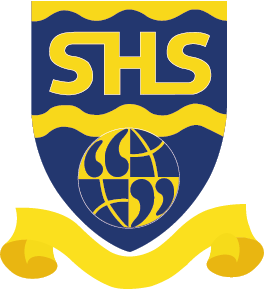Our School History
Memorial Board Centenary
We know not where the graves of these noble lads might be, but it matters not where they lie, whether in their own peaceful churchyards at home, or in the blood-stained mud of Flanders, on the fair fields of France, the sunny slopes or snow clad hills of Italy, or on the blistering sand of the Egyptian desert, on the soil of the Holy Land with its many sacred and hallowed associations, or on the bosom of the restless moaning sea – they are still ever near and dear to us with a hallowed memory which will never fade. Through them and their sacrifice, a torn tortured and bleeding world found peace – an earthly peace. They too have found rest and peace, but theirs is a greater, a nobler, a more glorious and a far serener peace even, “The Peace of God which passeth understanding.”
These were the words spoken by Headmaster George Jackson at the unveiling of the memorial board to the fallen former students of Stourport National Boys’ School on 25th March 1921. The board, having been salvaged from the ruins of that building following its bombing in the Second World War, was brought to the current school site. Sadly it lay unnoticed and unloved in the school’s boiler house for several decades before being discovered and restored by some volunteer students led by our former DT technician, the late Mr Dennis Simpson. Since the 1990s it has been proudly displayed in our main hall and is a centre-piece of our annual Remembrance Assembly. In this way their memory remains very much alive in our community and it “will never fade”.
This year sees the centenary of its original unveiling and is therefore something we would like to focus on here. Research conducted by my former colleague Mr Ceri Owens, some of our students and myself has identified a few more details about some of the 81 names on the board. 80 were former students of the Boys’ School and one, Rimel S Talbot, was a former teacher, who all lost their lives in the 1914-1918 conflict. As Mr Jackson stated in his speech he knew “not where the graves of these lads might be” in 1921. However, today with the help of the internet and local historians we are able to give some examples of where they actually lie:
“in their own peaceful churchyards at home” like Donald Large of 69 Bewdley Rd who died of his injuries here in Stourport exactly 2 weeks after the Armistice and is buried in St Michael’s churchyard.
“or in the blood-stained mud of Flanders” like Albert Payne of Lower Heath on Hartlebury Common who died at Messines Ridge in March 1915 and who, having no grave, is commemorated on the Menin Gate in Ypres, Belgium.
“on the fair fields of France” like William Wood of 13 Lion Hill, who was killed at Flers-Courcelette in August of 1916 and who is commemorated on the Thiepval Memorial with thousands of others who have no known grave.
“the sunny slopes or snow clad hills of Italy” like James Marks of Summerfield Rd, who died in the Vittorio Veneto region in October 1918, less than 2 weeks before the war ended.
“on the blistering sand of the Egyptian desert” like Alfred C Cook of 46 Albert St, Kidderminster who died at Katia in Egypt in April 1916 and is commemorated on the British military memorial in Jerusalem, Israel.
“on the soil of the Holy Land with its many sacred and hallowed associations” like George Randle of 2 Lodge Road, after whom Randle College is named. George died in the Gaza region of the Holy Land in March 1917 and is also commemorated on the same memorial in Jerusalem.
“on the bosom of the restless moaning sea” like Frank Higgins of 20 Lorne St who died when HMS Hampshire was sunk off the Orkneys in June of 1916 by a German mine. He went down with most of the crew and Field Marshal Lord Kitchener (the Secretary of State for War) who was being taken to Russia for wartime negotiations.
Furthermore, our lads are remembered on gravestones or memorials in various naval graveyards around the British Isles, in military cemeteries in Greece, Turkey and Iraq. Walter Key of 4 Lombard St, lies in a German cemetery having died in a prisoner-of-war camp near the city of Worms in October 1918. We know now where these noble lads lie, and their sacrifice, along with the millions of others who died in conflict on both sides, is something which, hopefully, we will never forget or repeat.
Chris Parry, 2021

Top Row (left to right): Frank Higgins & William Wood
Bottom Row (left to right): Donald Large, George Randle & Albert Payne

The restored memorial board in the current school hall.

An illustrated image of Stourport National School - artist unknown.
Have a story or photo to share?
We pride on our school history and would like to hear from you. Whether you are a past student or a local who knows the history of the school, any stories or photos would be very appreciated to enrich our school's culture and history.
Click the button on the right to submit your story or photo. If you are unable to email us, please contact our Reception team on 01299 872950.
